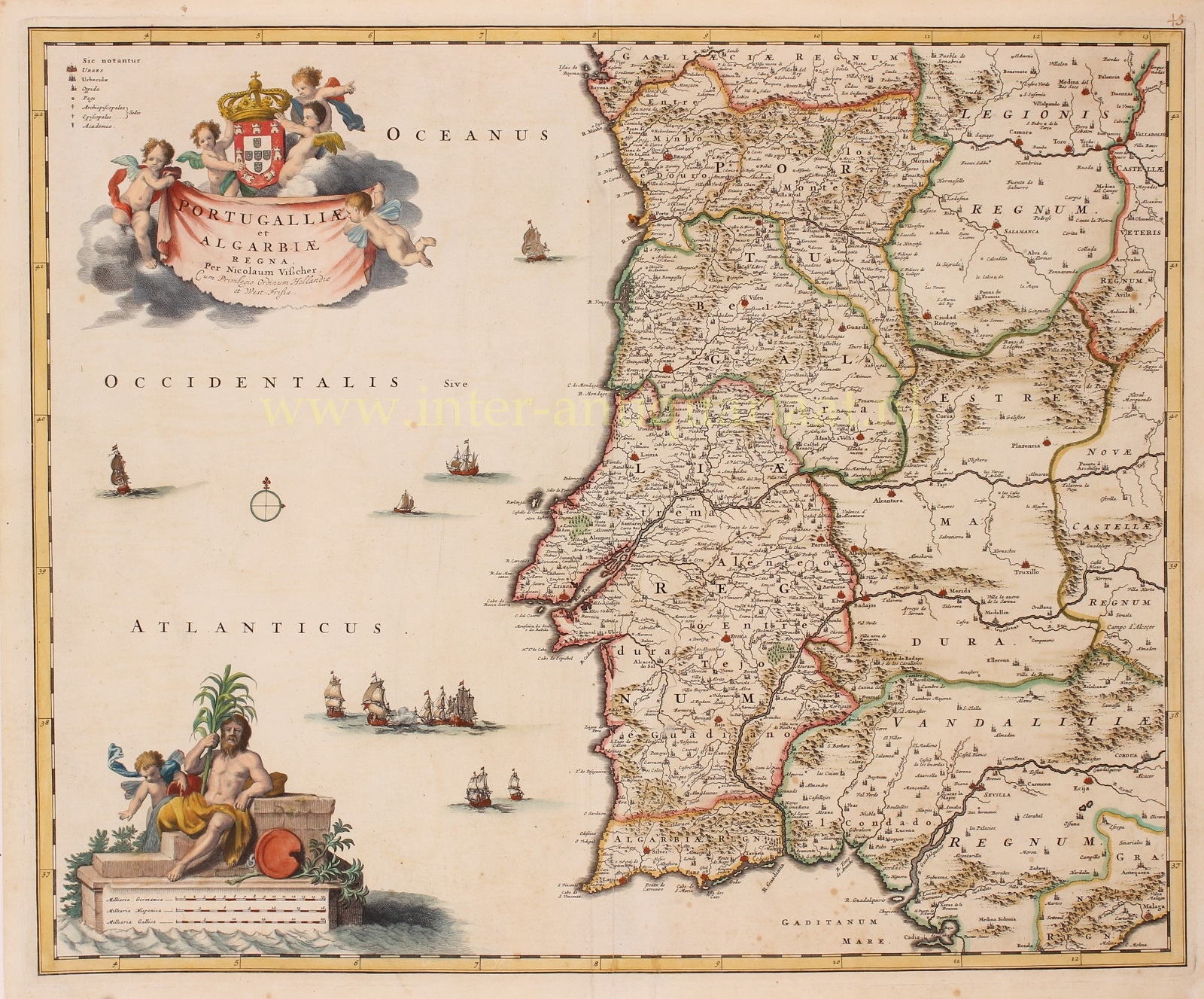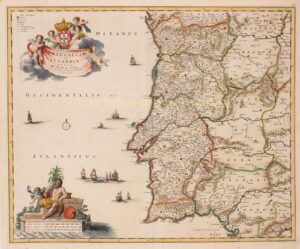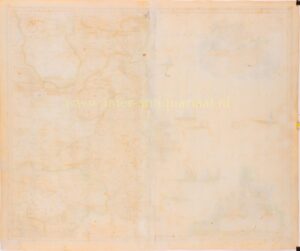“Portugalliae et Algarbriae Regna” (The kingdoms of Portugal and Algarve). Copper engraving published around 1680 by Nicolaes Visscher in Amsterdam. With original hand colouring. Size: approx. 50.5 x 53 cm.
This beautiful map shows a multitude of details: fortifications, roads, churches, abbeys, and hundreds of small villages. The whole is adorned with two elegant cartouches, with in the upper part cherubs holding a cloth with the title and publisher of the map, and above it, the coat of arms of Portugal with a royal crown held with reverence.
The earliest contacts between the Netherlands and Portugal probably date back to 1147 when Flemish and Frisian crusaders came to the aid of the Portuguese king to conquer Lisbon from the Muslims.
As a reward, the Low Countries received significant trading advantages from the Portuguese king. Trade would also form the basis for flourishing relations between the Dutch and the Portuguese in the following centuries.
However, the Dutch Revolt drastically changed the relations between the two countries. Initially, the Netherlands and Portugal maintained good relations. In 1576, Lisbon sent a special representative to the States-General to confirm the mutual free trade zone in a treaty.
When Spain occupied Portugal in 1580, things went awry. Dutch ships were no longer allowed to dock in Portuguese ports, thereby losing access to the spice markets of Lisbon and other cities. This forced the Dutch to venture to the East Indies themselves.
This led to a significant colonial expansion of the Dutch Republic but also resulted in a direct war with Portugal. Similar to the English and the French, the Dutch attempted to expand their global trade network, often at the expense of Spanish colonial interests. As Portugal and Spain formed the Iberian Union since 1580, Portuguese colonies and trading posts were also targeted.
Troops from the Dutch East India Company (VOC) and the Dutch West India Company (WIC) expelled the Portuguese from large parts of the Far East (East Indies, Ceylon) and a part of the West Indies. The Dutch captured Malacca and established a trading post in Formosa, which later became Taiwan.
However, not all attempts to defeat the Portuguese were successful. Efforts to capture Goa, the “capital” of the Portuguese Eastern Empire, failed. After previous Dutch conquests of Portuguese colonies in Brazil, the Portuguese eventually managed to drive the Dutch out.
In 1640, Portugal aligned itself during the Reapers’ War and managed to break free from Spanish rule and regain its independence. Shortly after, ties with the Dutch Republic were reestablished.
In 1675, the Portuguese Synagogue opened its doors in the heart of Amsterdam. At that time, it was the largest synagogue in the world.
Price: SOLD





